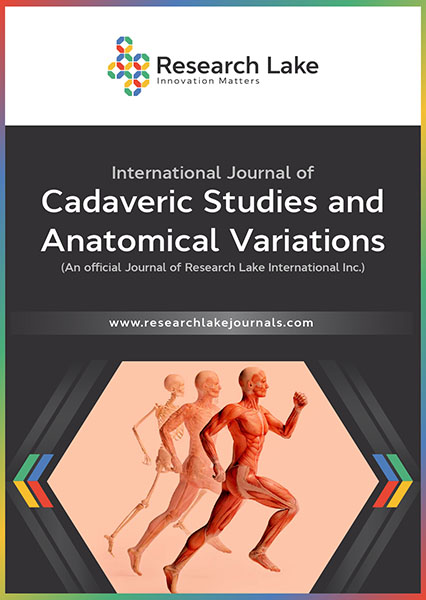Bilateral Medially Duplicated Internal Jugular Veins in an 85-Year-Old Female Donor
Abstract
An 85-year-old female donor prosected during an advanced anatomy graduate nursing course in 2023 was found to have bilateral anomalous internal jugular veins. These were classified as duplications as opposed to fenestrations, as each vein entered the subclavian vein separately. These variations have been classified into types A, B, and C. Type A is classified as a high fenestration joining to make a single entry into the subclavian vein. Type B is a duplication from just below the jugular foramen to the subclavian vein. Type C is a duplication starting commensurate to the hyoid bone with a laterally duplicated segment crossing the posterior triangle and making separate entry into the subclavian vein. This donor possesses a Type C bilateral medial variation with the duplicated limb descending medial to the carotid sheath and entering the subclavian vein lateral to the limb in standard position. Clinical ramifications and current literature are discussed.
Copyright (c) 2024 Teresa Buescher, ENS Olivia Staser, Maria Ximena Leighton, Kerrie Lashley, Elizabeth Maynes, Rodrigo Mateo, Guinevere Granite

This work is licensed under a Creative Commons Attribution-NonCommercial 4.0 International License.
Copyright © by the authors; licensee Research Lake International Inc., Canada. This article is an open access article distributed under the terms and conditions of the Creative Commons Attribution Non-Commercial License (CC BY-NC) (http://creativecommons.org/licenses/by-nc/4.0/).















